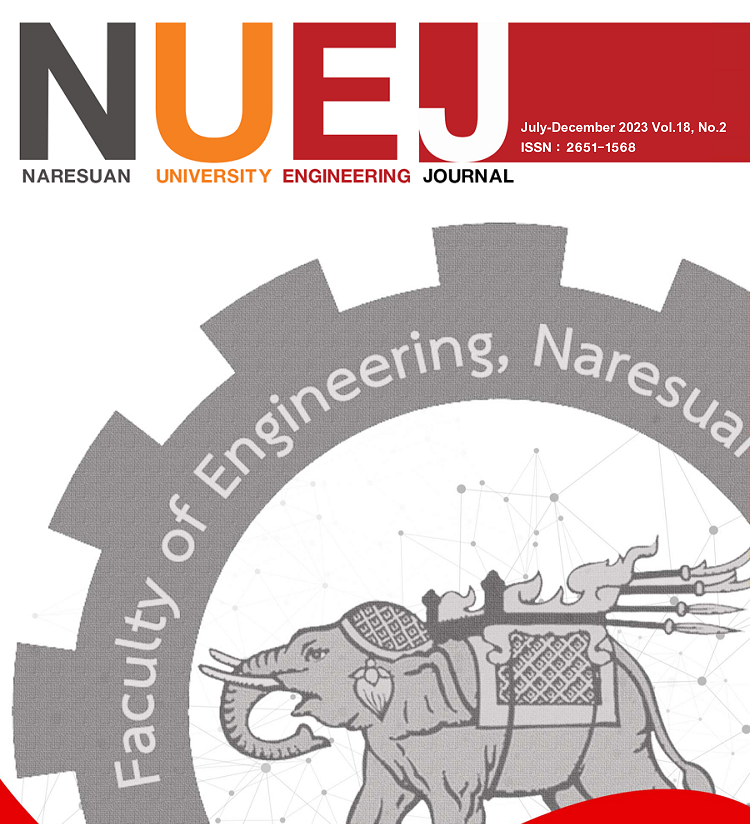Real-Time Root Cause Analysis of Governor Control System for Sirikit Hydropower
Main Article Content
บทคัดย่อ
The existing governor control system of Sirikit Hydropower is designed as a standalone system. It communicates to another system such as the distributed control system (DCS), protection system, and excitation system by hardwiring. Some abnormal events are the group alarms that cause the operator and maintenance team to spend more time on problem-solving. This paper studies real-time root cause analysis of the governor control system for Sirikit Hydropower. This real-time root cause can improve operator and maintenance team performance, especially in case of emergency and ready-to-start events. The real-time root cause analysis system knowledge is based on input/output real-time data of the governor system and DCS, maintenance instruction manual, history events, and drawing of the governor control system. The root cause analysis in this research is a fault tree logic analysis technique for diagnosing alarms and emergency events. Developing a graphical user interface is a real-time troubleshooting guide monitor with user-friendly. This system can help the operator and maintenance team to solve problems of the governor control system more effectively.
Article Details

อนุญาตภายใต้เงื่อนไข Creative Commons Attribution-NonCommercial-NoDerivatives 4.0 International License.
เอกสารอ้างอิง
Buaphan, I., & Premrudeepreechacharn, S. (2017, 21-24 June 2017). Development of expert system for fault diagnosis of an 8-MW bulb turbine downstream irrigation hydro power plant. Paper presented at the 2017 6th International Youth Conference on Energy (IYCE). https:/doi.org/10.1109/IYCE.2017.8003740
Dudgeon, G. (2017). Power Plant Model Validation (PPMV) with MATLAB and Simulink [White paper]. MathWorks Principal Industry Manager, Utilities &Energy. https://www.mathworks.com/campaigns/offers/next/power-plant-model validation.html
Hu, X., Zhang, K., Liu, K., Lin, X., Dey, S., & Onori, S. (2020). Advanced Fault Diagnosis for Lithium-Ion Battery Systems: A Review of Fault Mechanisms, Fault Features, and Diagnosis Procedures. IEEE Industrial Electronics Magazine, 14(3), 65-91. https:/doi.org/10.1109/MIE.2020.2964814
Knezevic, V., Orovic, J., Stazic, L., & Culin, J. (2020). Fault Tree Analysis and Failure Diagnosis of Marine Diesel Engine Turbocharger System. 8(12), 1004. https://doi.org/10.3390/jmse8121004
Kemikem, D., Boudour, M., Benabid, R., & Tehrani, K. (2018, 19-22 June 2018). Quantitative and Qualitative Reliability Assessment of Reparable Electrical Power Supply Systems using Fault Tree Method and Importance Factors. Paper presented at the 2018 13th Annual Conference on System of Systems Engineering (SoSE). https://doi.org/10.1109/ SYSOSE.2018.8428729
Melani, A. H. A., Murad, C. A., Caminada Netto, A., Souza, G. F. M. d., & Nabeta, S. I. (2018). Criticality-based maintenance of a coal-fired power plant. Energy, 147, 767-781. https://doi.org/10.1016/j.energy.2018.01.048
Nicolau, A. d. S., Algusto, J. P. d. S. C., Pereira, C. M. d. N. A., & Schirru, R. (2017). A Real Time Expert System for Decision Support in Nuclear Power Plants. World Academy of Science, Engineering and Technology International Journal of Nuclear and Quantum Engineering, 11(9), 612-618. doi:https://doi.org/10.5281/zenodo.1131982
Priambodo, N. W., Harsono, B. B. S. D. A., & Munir, B. S. (2018, 24-26 July 2018). Root Cause Analysis of Transformer and Generator Stator Failure on Hydropower Plant in Indonesia. Paper presented at the 2018 10th International Conference on Information Technology and Electrical Engineering (ICITEE). https://doi.org/10.1109/ICITEED.2018.8534825
Wang, Y., Li, X., Ma, J., & Li, S. (2017). Fault diagnosis of power transformer based on fault-tree analysis (FTA). IOP Conference Series: Earth and Environmental Science, 64(1), 012099. https://doi.org/10.1088 /1755-1315/64/1/012099


